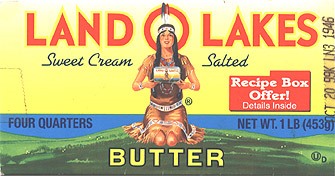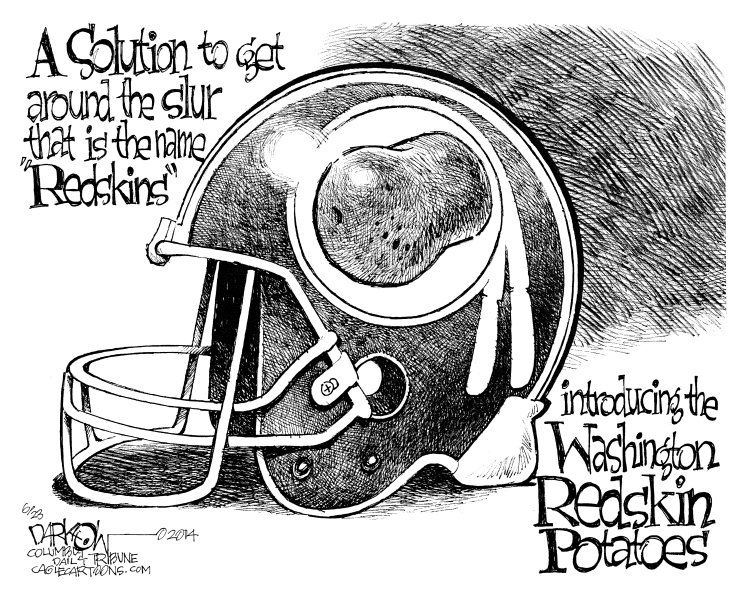Margie was born in Tulsa, Oklahoma, the only child of the late Claude Lee White and Elsie Vera Hammontree. The Whites can be traced back to 1823, in Wake Co, NC, if not to 20,000 BC at the Bering Straits. The Hammontrees can be traced to the late 1600s in the Tidewater country of Virginia.
Everything you've ever read about the American Experience happened to her people, from Valley Forge to Horseshoe Bend to Resaca, covered wagons, Indian raids, the Nations, Quantrill's Raiders and other bandit gangs, sheriffs and posses, shoot-outs on Main St (though not the quick-draw face off), and all what have you,
The Hammontrees did not quite approve of Claude wedding their sister, and the couple had to elope. For one thing, there was a considerable age difference, but also Claude had been married before, to a Bonnie Crawford. (We don't know what happened to her, or if Margie has any half-sibs.)
Elsie died when Margie was six, and Margie was raised by her widowed father, with the help of her grandmother, Ora Vanora Harris Hammontree and a flotilla of aunts, uncles and cousins.
Her father was a teamster and drove armored cars for a bank delivery service. Sometimes the owner, feeling sympathetic, gave permission for Claude to take Little Margie on his runs, so that the Marge was literally "rolling in dough" in the back of the armored car.
Margie's childhood home
She grew up in a "shotgun shack" near the rail line and recalled riding her trike down to watch the hoboes in the 'Jungle.' This was also the age of 'white only' and 'colored only' signs on water fountains et al., although Indians in OK could use the 'white only' facilities. Nonetheless, Margie grew up having nightmares about the Klan.
Her father took her hunting and fishing, She was toting a rifle at age 12. In later years, this scandalized her New Jersey/New York co-workers, because she was by then living in urbanized areas. She always liked fishing more than hunting [She didn't like the 'kick' of the rifle.] and learned early on to gut a fish, a useful skill when dealing with management.
One time, on a picnic, she was menaced by a sidewinder, but her father's friend blew it away with a six shooter. (In case you're wondering why country folk carry guns.) Another time, facing a water moccasin in a rowboat, she levitated into her father's arms. Another time, she was chased by a passel of hogs (yes, passel) and took refuge in a tree. The pigs kept her treed until the farmer, a friend of her father, came and drove them away.
Middle School and the first year of high school were dominated by the 'social clubs,' like the Merry Maids and others. Margie was invited to a few parties by the daughters of oil company executives, but those invitations dried up when they learned her social status. She found herself lumped with two other classmates who, although suitably wealthy, were Jewish. Their common identity was as "the Brains."
Her grandmother had been a Holy Roller. Their meetings, with all their tongue-speaking, scared the be-jabbers out of Little Marge. Other uncles and aunts were variously Presbyterian or Episcopal or Methodist. There seemed no rhyme or reason to it. As far as Margie remembered, her daddy was an atheist.
Then one day, she accompanied a friend to a Catholic Mass and she was awed by the "smells and bells" and the sense of rootedness and tradition. She took lessons and converted, in the process converting also her grandmother. Catholics also spoke in tongues: viz., Latin. Oddly, when her classmates learned she would be going to the Catholic high school the next year, all the snob attitudes changed. She must be something special to be accepted there.
 |
| Sr. M. Philomena, SSM |
Placed in the mother-house in Milwaukee, she was trained and assigned to elementary school instruction, second and fourth grade in Thiensville, WI. Dealing with children was another skill that would later prove invaluable in management. Later, she was assigned to the hospital in Roswell, NM. No, she didn't see any aliens.
She stayed eight years with the Order but never took permanent vows. She left in 1965 when her temporary vows expired and worked in admissions at Marquette University. The apartment house where she lived was later the residence of Jeffrey Dahmer, the Milwaukee Cannibal. It was torn down due to the infamy and no longer exists.
 |
| Disapproving of open housing |
Afterwards, she worked at the Northwestern Mutual Life Insurance company. One day, two of her co-workers, Sally Mortenson and D'Arlyn Marks, invited her to dinner at their commune, where, she caught the eye Michael, and the rest is history.
 |
| Margie met Mikey at the House |
After a whirlwind courtship, Mike and Margie wed and heighed off the next day for Colorado in the back of a friend's minivan, in which they were constantly threatened by toppling stacks of vinyl records and books. Mike had a graduate assistantship waiting there.
Once in Boulder, CO, ensconced in the Cavalier Apartments, just a couple blocks from the Math department of CU, Margie found a job with an NML agency south of Denver, beginning her lifetime of driving long distances. She loved driving, possibly because her father had been a Teamster. What she hated was traffic jams and would often drive 10 minutes out of her way to avoid a 5 minute delay. She had internalized all the roadmaps long before anyone came up with GPS.
 In 1974, 1+1=3, and Sara entered the equation. It was a long, difficult labor that ended in a C-section. They hadn't decided on a name until her gurney was being wheeled past the waiting room and, half-sedated, she gasped out "Sara Margaret."
In 1974, 1+1=3, and Sara entered the equation. It was a long, difficult labor that ended in a C-section. They hadn't decided on a name until her gurney was being wheeled past the waiting room and, half-sedated, she gasped out "Sara Margaret."Late the following year, Dennis was born. There was never any doubt that he would be named for Mike's late brother, so no last minute dramatics.
Never has a mother mothered so thoroughly. There was nothing they needed that she did not st least attempt to provide. In later years, she would cross the country at anysign of an illness or other need in her children.
 Afterwards, she segued into banking at Central Bank of Denver, where she acquired advanced certificates from the American Institute of Banking and for a time became the AIB governor. She wound up at the Federal Reserve Bank of Kansas City, Denver branch, where she worked in Check Processing (Does anyone remember checks?) and became a computer system analyst, back when "computer" meant mainframe. Along the way, she finished her education at Regis College with a degree in Communications.
Afterwards, she segued into banking at Central Bank of Denver, where she acquired advanced certificates from the American Institute of Banking and for a time became the AIB governor. She wound up at the Federal Reserve Bank of Kansas City, Denver branch, where she worked in Check Processing (Does anyone remember checks?) and became a computer system analyst, back when "computer" meant mainframe. Along the way, she finished her education at Regis College with a degree in Communications.
In 1976, at an AIB convention in Phoenix, she watched from her hotel room while Clint Eastwood's bus was shot up filming The Gauntlet. In 1978, she took her kids to visit the set for the miniseries Centennial, which was built near Denver. Later, in NYC, she watched them build a faux subway station outside the Federal Reserve Bank for the Bruce Willis flick, Die Hard with a Vengeance. She loved watching movies, especially indies. It was one of Marge and Mike's favorite joint activities.
When Mike was offered a job in the East, Margie transferred from the Denver branch of the Fed of Kansas City to the main office of the Fed of New York. This meant catching NJTransit at Metuchen or MetroPark, transferring to PATH at Newark, and coming up on the long escalators under the World Trade Center then walking to the Fed.
She loved New York. Every year, she took her daughter to see the Nutcracker, the Tree, et al. There were trips to the Met, Carnegie Hall, the Metropolitan Opera, the Museum of Natural History, to restaurants and so on.
The Fed of NY transferred its Check Processing to East Rutherford Operations Center, NJ. Margie
planned and conducted Check Processing's move, setting up the rooms, the sorting machines, phone portals, cabling, and so forth. She was known to get on hands and
knees under the flooring to check on cable connections.And she had to do this while maintaining check processing operations.
Some of her best friends were from her work, among them Julio, who secured tickets to sundry plays, musicals, and operas -- from a revival of Oklahoma! to a modernized version of The Mikado, by way of Carmen.
Mike's job and avocation both provided her with travel opportunities. She accompanied him to Ireland and Scotland, and to Vienna and Budapest. When Mike was tied up conducting a seminar, she took a day-trip to Prague. She toured Italy with her father-in-law and brother-in-law. She also visited various cities within the USA (SFO, LAX, ORD, BWI, DCA, SAT, et al.) often accompanying Mike on a consulting job or to a science fiction con.
The end was swift, gentle, and unexpected. She began to complain about a pain in her hip that gave her trouble walking. The orthopedist suspected arthritis, then bursitis. Then, one day, she could not get up from sitting, it hurt so bad. So, with some reluctance, she let herself be taken to the hospital. [She hated to be a bother to other people.] There, they took an MRI and discovered stage 4 kidney cancer. They placed her in a Skilled Nursing Facility and started a regime of radiation treatments. The doctors envisioned her going home once she had mastered walking and steps. At one point, with a walker, she took 16 steps.
One Monday, Sara took Mike to visit Margie, and she was cheerful, if a bit tired, and they talked for an hour or two. On Tuesday, Mike's cousin [and Margie's good friend] Mariellen went to visit her and found her similarly alert and talkative. On Thursday, the nurses could not wake her.
The SNF summoned the Emergency Squad, but by the time they arrived. Margie was once more awake and conversing with the technicians as they prepped her for transport. Sara and Mike went to sit with her in the Emergency Room, by which time she was asleep once more. When Mike spoke to her, she opened her eyes and they got real big. Then, they closed again. Sean and Danna had come up from Philly and we all went over to the hospital when she was transferred there.
After a time, Sean drove Mike back to the house to rest. Someone -- Sean, Sara, or granddaughter Noelle -- would come in the morning to bring me back. Mike lay down and, shortly, the phone rang. Mike knew even before he answered what the call was. He had heard the ban sidhe crying before he picked it up.
Margie's great heart was stilled and the prettiest smile on the planet had faded at last. At least from this material world. She smiles forever in our hearts.
She left was two months shy of her 50th wedding anniversary. It won't be nearly so much fun without her.
Her greatest pleasure lay in making others happy.












